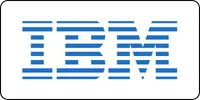Hardware & Networking Course







Hardware and Networking Course
The Hardware and Networking Certification Training program offers students in Vadodara a solid foundation in computer systems and network infrastructure. This course equips learners with the hands-on skills and theoretical understanding required to assemble, configure, maintain, and troubleshoot hardware and networking environments effectively.
Recognized as the Best Hardware and Networking training in Vadodara, the program covers a wide range of essential topics such as operating systems, computer assembly, peripherals, network protocols, LAN/WAN configuration, IP addressing, and security practices. Participants will gain practical experience configuring routers, switches, and firewalls while learning to manage both wired and wireless networks.
This comprehensive Hardware and Networking course in Vadodara blends classroom instruction with hands-on labs and real-world simulations. It prepares students for various industry certifications like CompTIA A+, Cisco CCNA, and Microsoft, which significantly enhance employability and technical credibility.
Ideal for aspiring IT support technicians, network administrators, and system analysts, this course fosters critical thinking, problem-solving, and real-time troubleshooting skills. With a strong focus on practical applications, students will graduate ready to take on technical roles across a variety of industries.
In addition to professional growth, the Hardware and Networking coaching classes in Vadodara ensure personalized mentorship and a supportive learning environment that accelerates skill development. Whether you’re launching a new career or upgrading existing skills, this training is your gateway to success in the ever-evolving tech industry.
What will I learn?
- Understand the basic principles of computer hardware and architecture.
- Install, configure, and troubleshoot hardware components and peripheral devices.
- Identify and describe the functions of various hardware components, including CPUs, motherboards, RAM, storage devices, and input/output devices.
- Understand networking concepts, including network topologies, protocols, and architectures.
- Configure and manage network devices, such as routers, switches, and access points.
- Implement basic network security measures and protocols.
Requirements
- No prior experience required.
- Basic computer literacy and familiarity with operating systems (Windows, Linux, or macOS) are beneficial but not mandatory.
Hardware and Networking Course Content
- Introduction to Computer Hardware
- Overview of computer hardware components and their functions.
- Understanding the difference between hardware and software.
- Historical perspective and evolution of computer hardware.
- Basic Electronics
- Fundamentals of electricity and electronics.
- Understanding voltage, current, resistance, and power.
- Introduction to electronic components such as resistors, capacitors, and diodes.
- Computer Architecture
- Overview of CPU (Central Processing Unit) architecture and operation.
- Understanding memory hierarchy: RAM, ROM, cache memory.
- Introduction to motherboard components and their functions.
- Peripheral Devices
- Overview of input devices: keyboards, mice, scanners, etc.
- Introduction to output devices: monitors, printers, speakers, etc.
- Understanding storage devices: hard drives, solid-state drives (SSDs), optical drives, etc.
- Assembling and Disassembling Computers
- Step-by-step guide to assembling a desktop computer.
- Understanding hardware compatibility and component selection.
- Safety precautions and best practices for handling computer components.
- BIOS/UEFI and Firmware
- Understanding the BIOS (Basic Input/Output System) and UEFI (Unified Extensible Firmware Interface).
- Configuring BIOS/UEFI settings for system initialization and hardware detection.
- Updating firmware and BIOS/UEFI for compatibility and security patches.
- Hardware Troubleshooting
- Identifying common hardware problems and symptoms.
- Troubleshooting techniques for hardware issues: POST (Power-On Self Test), diagnostic tools, etc.
- Repair and replacement procedures for faulty hardware components.
- Hardware Maintenance and Upgrades
- Preventive maintenance techniques for computer hardware.
- Cleaning and dusting internal components.
- Upgrading hardware components: RAM, CPU, GPU, storage devices, etc.
- Networking Hardware
- Overview of networking hardware components: routers, switches, modems, etc.
- Understanding network interfaces and protocols.
- Configuring and troubleshooting network hardware issues.
- Hardware Security
- Understanding hardware-level security threats and vulnerabilities.
- Introduction to hardware-based security features: TPM (Trusted Platform Module), secure boot, hardware encryption, etc.
- Best practices for securing hardware against physical and cyber attacks.
- Emerging Technologies and Trends
- Overview of emerging hardware technologies: quantum computing, neuromorphic computing, etc.
- Understanding the impact of AI (Artificial Intelligence) and ML (Machine Learning) on hardware design.
- Exploring future trends in computer hardware development.
- Identifying Hardware Components
- Exercise: Provide students with images or physical hardware components and ask them to identify each component, its function, and its location on a computer motherboard.
- Objective: Reinforce understanding of hardware components and their roles in a computer system.
- Computer Assembly
- Exercise: Divide students into groups and provide them with computer components. Instruct them to assemble a computer following step-by-step instructions.
- Objective: Develop practical skills in assembling computer hardware and understanding component compatibility.
- Troubleshooting Scenarios
- Exercise: Present students with simulated hardware issues (e.g., no display, system overheating, hardware failure). Ask them to diagnose the problem and propose solutions.
- Objective: Enhance problem-solving skills and develop the ability to troubleshoot hardware problems effectively.
- BIOS/UEFI Configuration
- Exercise: Provide students with access to BIOS/UEFI settings on a computer. Task them with configuring various settings such as boot order, hardware monitoring, and security options.
- Objective: Familiarize students with BIOS/UEFI interfaces and settings and demonstrate how to configure hardware parameters.
- Hardware Upgrades
- Exercise: Instruct students to upgrade hardware components (e.g., adding RAM, replacing a CPU, installing a new graphics card) on a computer system.
- Objective: Provide hands-on experience with hardware upgrades and reinforce understanding of compatibility and installation procedures.
- Networking Configuration
- Exercise: Set up a small network environment with routers, switches, and computers. Ask students to configure network settings such as IP addresses, subnet masks, and DNS servers.
- Objective: Develop skills in configuring and troubleshooting networking hardware and understanding network protocols.
- Hardware Security Assessment
- Exercise: Present students with scenarios involving hardware security threats (e.g., physical theft, tampering, side-channel attacks). Ask them to identify vulnerabilities and propose countermeasures.
- Objective: Raise awareness of hardware security risks and develop skills in assessing and mitigating security threats.
- Emerging Technologies Exploration
- Exercise: Assign research projects on emerging hardware technologies (e.g., quantum computing, AI hardware accelerators). Require students to present their findings and discuss potential applications.
- Objective: Encourage exploration of cutting-edge hardware technologies and foster critical thinking about future trends in hardware development.
- Introduction to Networking
- Overview of computer networks and their importance in modern computing.
- Understanding the OSI (Open Systems Interconnection) and TCP/IP models.
- Overview of networking devices: routers, switches, hubs, modems, etc.
- Networking Fundamentals
- Understanding networking terminology: LAN, WAN, MAN, PAN, etc.
- Introduction to network topologies: bus, star, ring, mesh, etc.
- Basics of data transmission: analog vs. digital signals, serial vs. parallel transmission.
- Ethernet and LAN Technologies
- Overview of Ethernet standards and protocols.
- Introduction to LAN technologies: Ethernet, Wi-Fi, Token Ring, etc.
- Configuring and managing Ethernet switches and VLANs (Virtual Local Area Networks).
- TCP/IP Protocol Suite
- Understanding the TCP/IP protocol stack and its layers.
- Detailed study of TCP (Transmission Control Protocol) and UDP (User Datagram Protocol).
- Overview of IP addressing: IPv4 vs. IPv6, subnetting, CIDR notation.
- Routing and Switching
- Introduction to routing concepts: routing tables, routing algorithms, routing protocols (e.g., RIP, OSPF, BGP).
- Configuring and managing routers: static routing, dynamic routing, routing policies.
- Understanding switching concepts: MAC addresses, switching methods (store-and-forward, cut-through), VLANs.
- Wireless Networking
- Introduction to wireless networking standards: 802.11a/b/g/n/ac.
- Configuring and securing wireless networks: SSID, encryption (WEP, WPA, WPA2), MAC filtering.
- Understanding wireless LAN controllers and access points.
- Network Security
- Overview of network security threats and vulnerabilities.
- Introduction to network security principles: confidentiality, integrity, availability.
- Configuring and managing network security measures: firewalls, intrusion detection/prevention systems (IDS/IPS), VPNs.
- Network Design and Implementation
- Designing network architectures: small office/home office (SOHO), enterprise, campus, data center.
- Network planning and documentation: network diagrams, IP address allocation, subnetting.
- Implementing network services: DHCP, DNS, NAT, NTP.
- Network Management and Monitoring
- Introduction to network management protocols: SNMP (Simple Network Management Protocol), ICMP (Internet Control Message Protocol).
- Configuring network management tools: SNMP agents, network monitoring software (e.g., Nagios, Zabbix).
- Troubleshooting network issues: using network diagnostic tools (ping, traceroute, nslookup), analyzing network traffic.
- Quality of Service (QoS)
- Understanding QoS concepts: bandwidth, latency, jitter, packet loss.
- Configuring QoS policies for prioritizing traffic: traffic shaping, traffic policing, queuing algorithms (FIFO, WFQ, CBQ).
- Implementing QoS for voice and video applications: VoIP, video conferencing.
- Emerging Technologies and Trends
- Introduction to emerging networking technologies: SDN (Software-Defined Networking), NFV (Network Functions Virtualization), IoT (Internet of Things).
- Exploring future trends in networking: 5G, edge computing, network automation.
- Understanding the impact of cloud computing on networking architectures and services.
- Case Studies and Real-World Applications
- Analyzing real-world networking scenarios and case studies.
- Best practices for designing, implementing, and managing network solutions.
- Review of sample questions and exam preparation tips for networking certifications (e.g., Cisco CCNA, CompTIA Network+).
- Network Device Configuration
- Exercise: Provide students with routers and switches and instruct them to configure basic network settings such as IP addresses, subnet masks, and default gateways.
- Objective: Develop practical skills in configuring network devices and understanding basic networking concepts.
- VLAN Configuration
- Exercise: Set up a network topology with multiple VLANs and assign ports to different VLANs on switches.
- Objective: Familiarize students with VLAN concepts and configuration, and demonstrate segmentation of network traffic.
- Routing Configuration
- Exercise: Configure routers to enable routing between different network segments using static routes or dynamic routing protocols (e.g., OSPF, RIP).
- Objective: Provide hands-on experience with routing configuration and demonstrate routing table management.
- Wireless Network Setup
- Exercise: Set up a wireless network using wireless access points (APs) and configure SSIDs, encryption, and authentication settings.
- Objective: Develop skills in configuring and securing wireless networks, and understanding wireless networking standards.
- Network Troubleshooting
- Exercise: Simulate network issues such as connectivity problems, slow performance, or device failures. Ask students to diagnose and troubleshoot the issues using network diagnostic tools (e.g., ping, traceroute).
- Objective: Enhance problem-solving skills and develop the ability to troubleshoot common network problems.
- Packet Capture and Analysis
- Exercise: Use packet capture tools such as Wireshark to capture network traffic on a segment of the network. Analyze the captured packets to identify protocols, examine packet headers, and diagnose network issues.
- Objective: Provide practical experience with packet analysis and understanding of network protocols and traffic patterns.
- Quality of Service (QoS) Configuration
- Exercise: Configure QoS policies on routers or switches to prioritize certain types of network traffic (e.g., voice, video) over others. Test the QoS configuration by generating different types of traffic and observing the effects.
- Objective: Demonstrate the implementation of QoS techniques to ensure optimal performance for critical network applications.
- Network Security Setup
- Exercise: Implement network security measures such as access control lists (ACLs), firewalls, and VPNs to secure network traffic. Test the security configuration by attempting unauthorized access and verifying security policies.
- Objective: Develop skills in configuring and managing network security measures and understanding security best practices.
- IPv6 Configuration
- Exercise: Configure routers, switches, and hosts to support IPv6 addressing and communication. Test IPv6 connectivity between devices and verify proper address assignment and routing.
- Objective: Familiarize students with IPv6 addressing and configuration, and demonstrate coexistence with IPv4 networks.
- Network Design and Documentation
- Exercise: Design a network topology for a given scenario, including IP addressing, subnetting, and device placement. Create network diagrams and documentation to illustrate the design.
- Objective: Develop skills in network planning and design, and practice documenting network configurations for future reference
Get in touch
400+ Global Employment Partners







































Why Choose Hardware and Networking Certification Course from Bright Computer Education?
Hardware and Networking courses are designed to offer a practical, career-focused, and technically rich learning experience for individuals aiming to build expertise in IT infrastructure and support. Whether you’re planning to Learn Hardware and Networking in Vadodara, starting from scratch with Hardware and Networking for beginners in Vadodara, or ready to advance through Advanced Hardware and Networking training in Vadodara, these programs support learners at every level. The curriculum includes topics such as computer hardware components, network configurations, troubleshooting, server management, and security protocols. With hands-on labs, real-time simulations, and expert-led instruction, students gain the skills and confidence to work in system administration, tech support, and network management roles.

Designed Curriculum
Our curriculum covers everything from basic to advanced topics. Topics include variables, data types, control structures, functions, OOP, STL, and more.

Hands-on Learning
Dive into practical exercises and coding projects that reinforce learning and help you build real-world applications.

Experienced Instructors
Learn from industry experts with years of experience in C programming and software development.
Flexible Learning
Choose from flexible scheduling options, including self-paced learning or live virtual classes to fit your busy lifestyle.
Career Development
Gain valuable skills sought after by employers in various industries, from software development to embedded systems and beyond.
Interactive Learning
Engage with fellow learners and instructors through live Q&A sessions, discussion forums, and collaborative coding exercises.
Diverse Career Opportunities in Hardware and Networking: Exploring Paths in India's Technology Sector
The Hardware and Networking course provides comprehensive training in computer hardware, system assembly, maintenance, LAN/WAN networking, troubleshooting, and basic cybersecurity. It is ideal for those looking to start a career in IT infrastructure support, system administration, or network management.
In India, entry-level professionals in hardware and networking earn between ₹2.5–6 lakhs per annum. With additional certifications such as CompTIA A+, CCNA, or Microsoft Certified: Azure Fundamentals, career prospects and salary potential increase significantly. Industries like IT services, education, banking, manufacturing, and telecom regularly hire skilled hardware and networking professionals.
Abroad, particularly in countries like the U.S., Canada, UAE, and Australia, hardware and network support roles offer salaries ranging from $50,000 to $80,000 annually. With 2–5 years of experience, individuals can progress to roles such as System Administrator, Network Engineer, IT Support Specialist, or Infrastructure Technician.
Frequently Asked Questions
Recently View Courses
Course Details Curriculum Placement FAQ’s AWS Certified Solution Architect Associate Course The AWS Certified Solutions...
Read MoreCourse Details Curriculum Placement FAQ’s AWS Certified Cloud Practitioner Course The AWS Certified Cloud Practitioner training...
Read MoreCourse Details Curriculum Placement FAQ’s RHCE-Red Hat Certified Engineer Training Course Looking to take...
Read More
